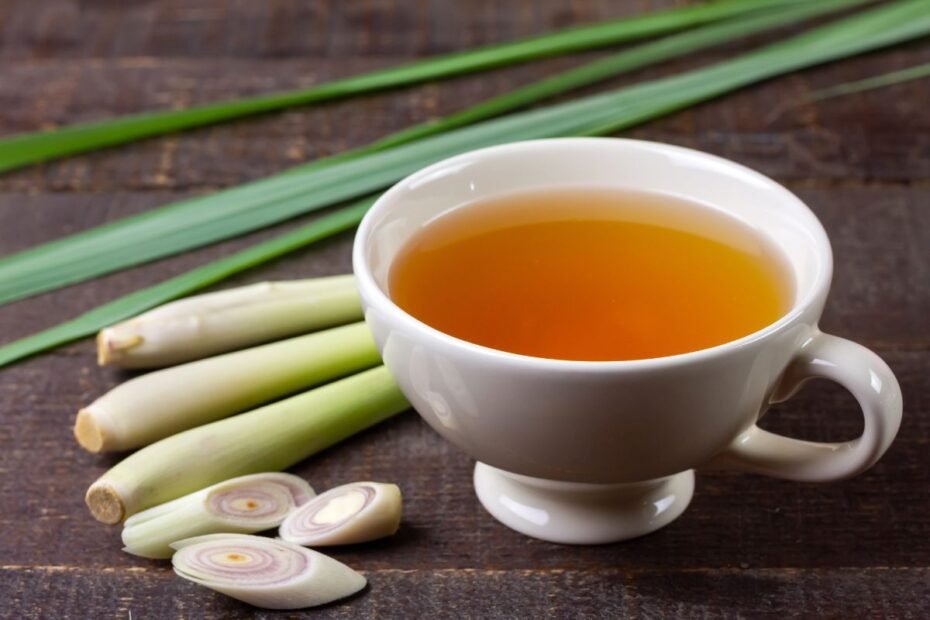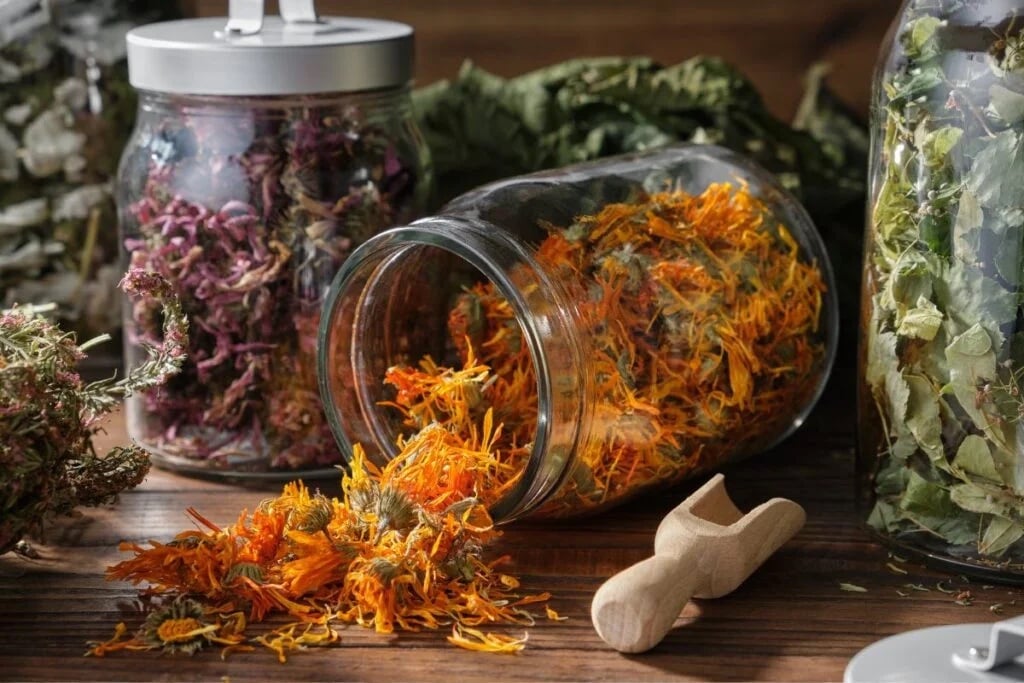Lemongrass (Cymbopogon) is a plant native to Sri Lanka and South India that grows in many parts of the world. Its stems are a common ingredient in Asian cuisine. But tea is one of its most popular uses. Did you know that lemongrass tea has been used in Asia for centuries to treat digestive disorders, boost immunity, and improve general well-being? And that’s not all—it has anti-inflammatory properties, can help you lose weight, or even improve your skin and hair! And that’s not all lemongrass tea benefits: enhance it with combination with ginger.
What Is Lemongrass Tea Made of? What Does It Taste Like?
Lemongrass tea can be made from fresh or dried green leaves, white stems, or roots. This tea has a mild sweetness, freshness, and a slightly lemony taste. It doesn’t have the tangy or bitter notes of lemons. The tea has a pale yellow color and a hint of lemon in its aroma.
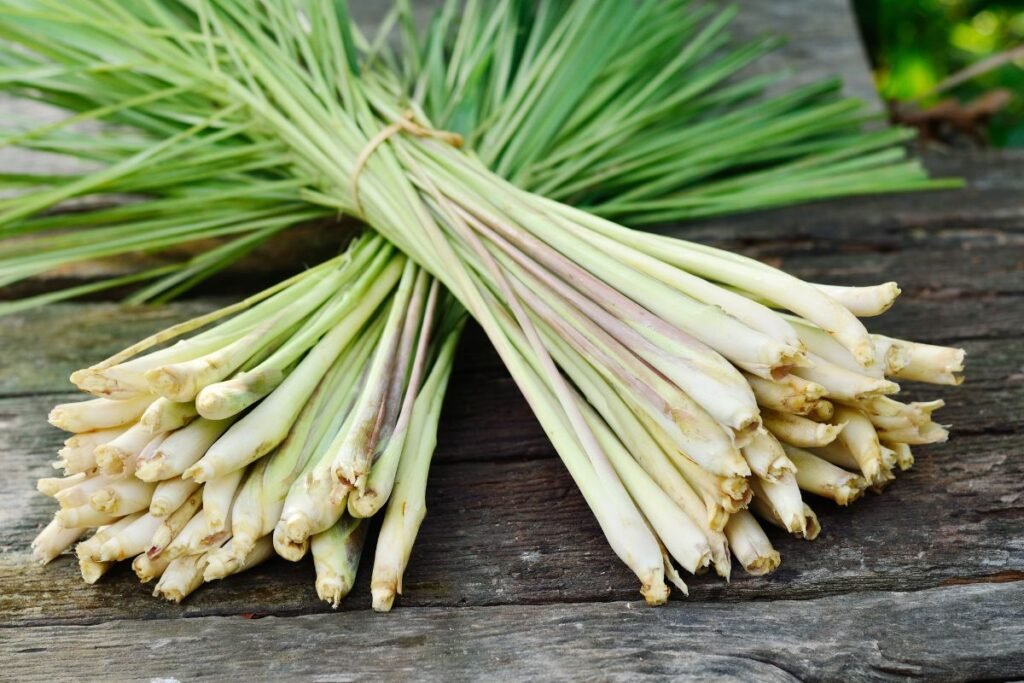
Lemongrass Tea Can Help Your Digestion
Lemongrass tea is a well-known home remedy for stomach upsets and cramps. This drink helps to soothe the digestive tract by ensuring the efficient breakdown and absorption of nutrients. It protects the stomach lining from the effects of aspirin and ethanol. If you like to go to Asian restaurants, it is probably no surprise that they always offer lemongrass tea after the meal. Let’s start the New Year with new habits or a healthier lifestyle. Lemongrass tea can be a welcome choice for your beverage diet.
Lemongrass has diuretic properties that make it easier to remove excess water and sodium from the body, helping to reduce bloating and fluid retention. It helps combat edema, and liver and heart failure.
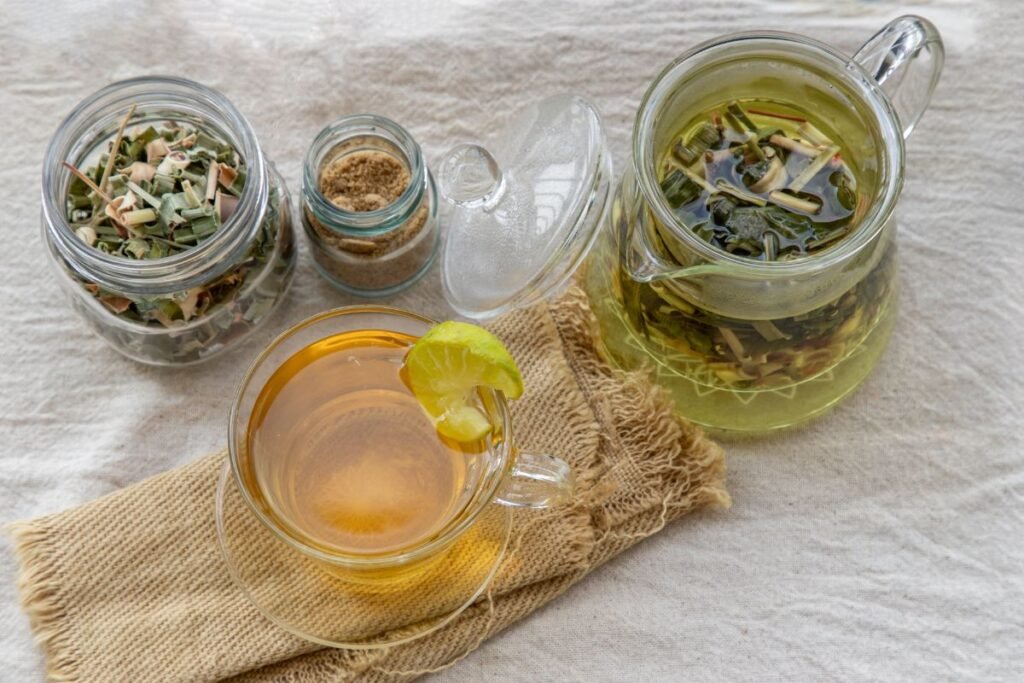
Lemongrass Tea Benefits
Here are some more lemongrass tea benefits you can enjoy:
- Anti-inflammatory. Chronic inflammation is a common symptom of many serious health problems, from arthritis to heart disease and stroke. The constituents of lemongrass tea have beneficial properties such as citral and geranial. They can reduce inflammation and alleviate associated health complications.
- Lowers blood cholesterol. Regular consumption of lemongrass is associated with lower levels of bad cholesterol. This substance reduces the risk of cardiovascular disease, attacks, and stroke.
- It helps you lose weight. Lemongrass tea can speed up the metabolism and help shed unwanted kilos. It is a natural diuretic. It means that it helps to remove excess water from the body. And that’s a double benefit!
- Reduces anxiety. Some people use the aroma of lemongrass or its essential oil to reduce anxiety. Lemongrass has calming properties and can help you relax. The tea has a similar effect.
- It helps prevent oral diseases. The antimicrobial compounds in lemongrass can inhibit the growth of harmful oral bacteria, helping to prevent tooth decay and gum disease.
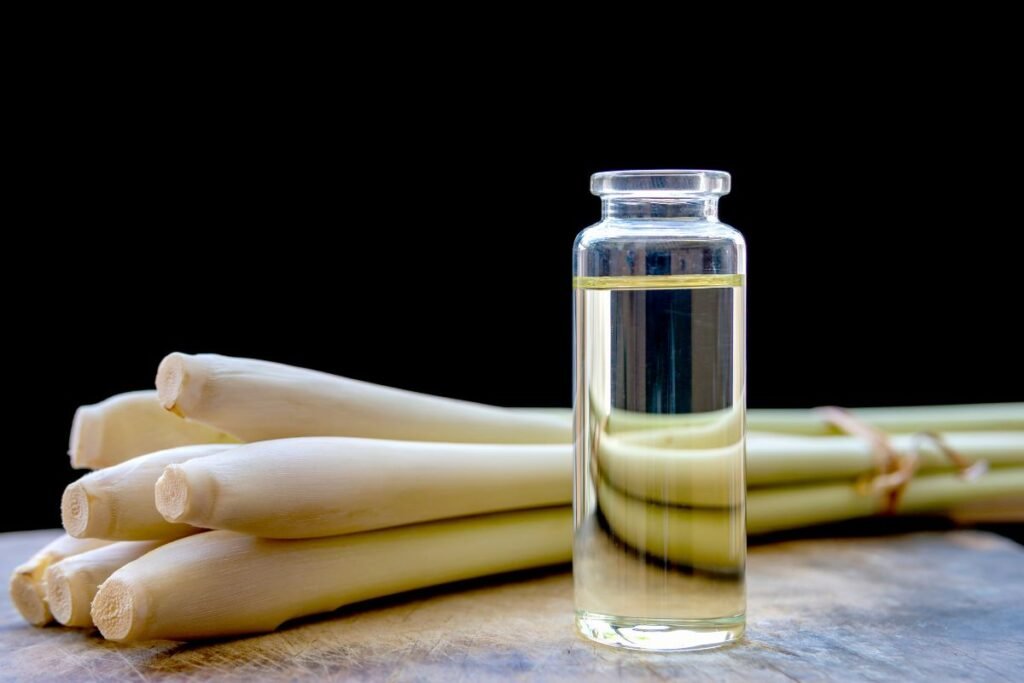
Lemongrass for Skin and Hair
It may come as a surprise, but lemongrass can be your path to clear skin and long hair! Lemon grass has antibacterial and antifungal properties, making it a great cleanser. If you want to try something other than tea, mix a few drops of lemongrass oil with another oil, such as coconut or olive oil, and apply it to your skin or hair. After half an hour, enjoy the results!
Classic Lemongrass Tea
This is practically the ideal morning tea, but you can enjoy its intense but mild taste any time of day. This recipe combines lemongrass with black tea to create a robust and zingy blend bursting with lemony sweetness. The sweet taste of lemongrass and the robustness of rich black tea combine to create a delightful drink that lifts your mood and gives you energy for the day.
Ingredients:
- 1 cup of water
- 0.5 teaspoon dried lemongrass
- 0.5 teaspoon of black tea (for example, Darjeeling)
- sugar or honey (to taste)
Put a cup of water in a teapot, add the sugar, and bring to a boil. Then place the black tea and lemongrass. Boil it again. Reduce the heat and boil for 3 minutes. Turn off the stove, and strain the tea into a cup. You can now enjoy a fresh, aromatic drink.
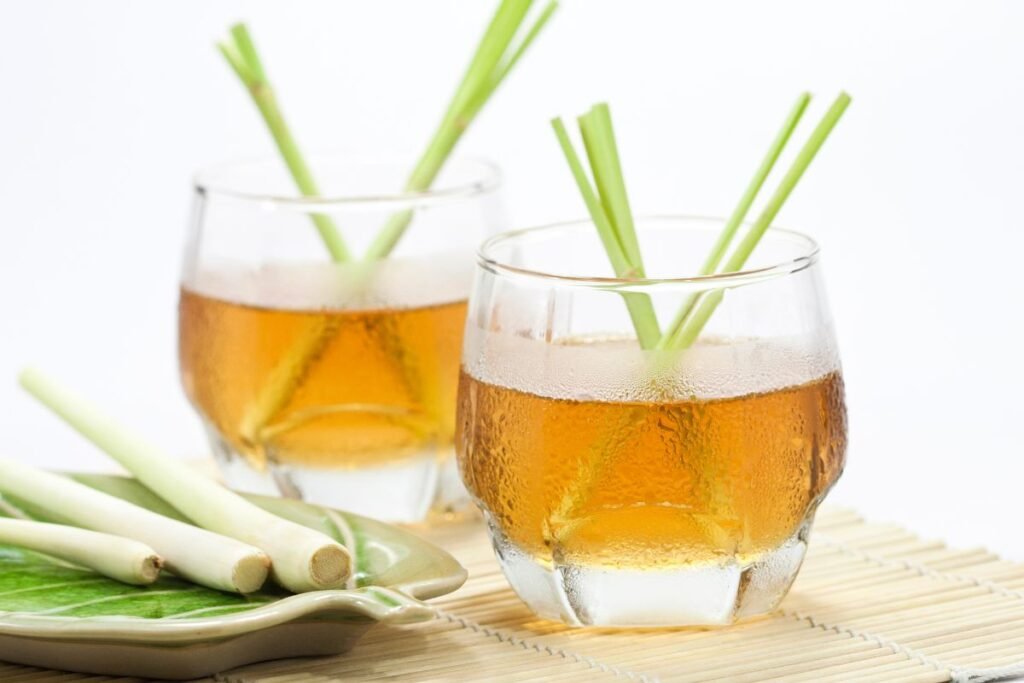
Benefits of Lemongrass and Ginger Tea
Lemongrass ginger tea benefits: this combination will soothe the body and delight the palate with its delicate taste. The wintry aroma of ginger and the refreshing sweetness of lemongrass combine beautifully with green tea. This tea will be the perfect calming break on a busy day.
Ingredients:
- 1 cup of water
- 0.5 tsp. dried lemongrass
- 0.5 teaspoon green tea
- piece of ginger
- sugar or honey (to taste)
Put the lemongrass, green tea, and ginger in a teapot. Pour boiling water over everything and let it steep for about 3 minutes. If you want to strain the tea, add honey or sugar. Enjoy!

Make Lemongrass Tea Bags Your Own
Instead of boiling fresh lemongrass, make tea bags from dried or fresh, home-grown lemongrass yourself. First, cut and dry the green lemongrass leaves, or crushed dried lemongrass. Next, take empty tea bags and add lemongrass to them. The finer the lemongrass, the better. That’s all your tea is ready for. As usual, put the tea bag in a cup and pour boiling water over it. Steep for about 5 minutes, remove the bag, and enjoy.
How Many Cups of Lemongrass Tea Can I Have?
Although moderate consumption of lemongrass tea is generally considered safe. An overdose of tea can cause stomach pain or upset. It is best to drink 1-3 cups per day. It helps to avoid any side effects.
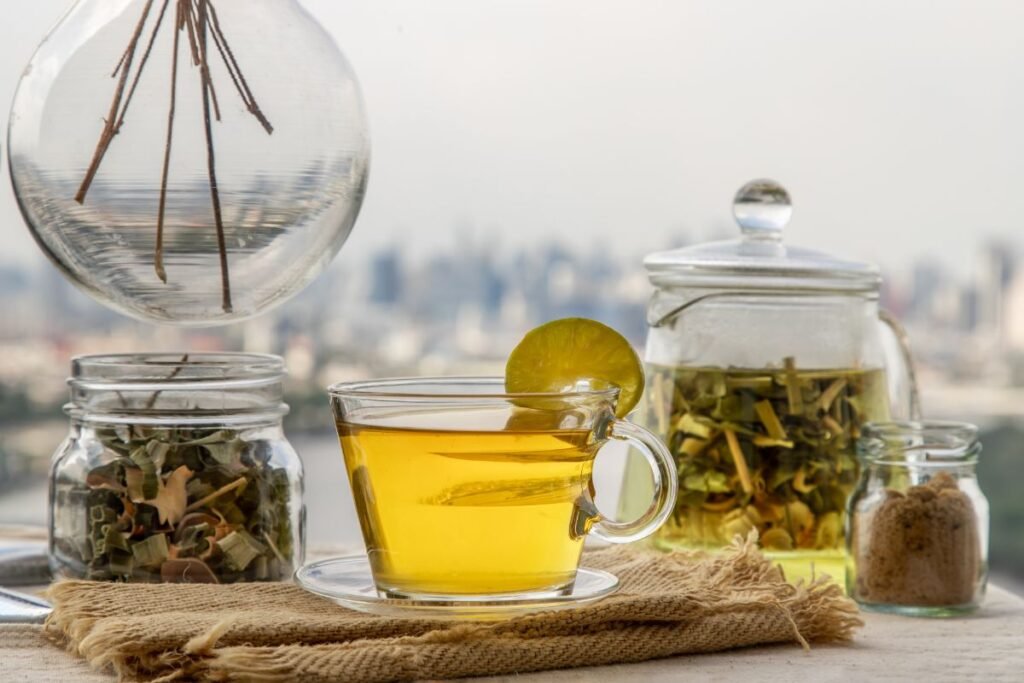
When Should I Drink Lemongrass Tea?
Whenever you want! A rainy or cold day seems to be the best time to drink a freshly brewed cup of lemongrass tea. It helps you relax and warm up after a long day. In India, for example, lemongrass tea is made in the rainy season, usually in the evening after a meal, to aid digestion and help you fall asleep faster.
Can Lemongrass Tea Have Side Effects?
Lemongrass is generally considered safe if you do not exceed the recommended daily intake. Otherwise, you may experience dizziness, increased hunger, dry mouth, increased urination, or fatigue. Some people may be allergic to lemongrass. Call your doctor if you experience symptoms of an allergic reaction, such as a rash, itching, difficulty breathing, or an increased heartbeat.
However, you should not drink lemongrass tea if you:
- are pregnant
- are taking prescription diuretics,
- have a low heart rate,
- are diagnosed with potassium deficiency.

Lemongrass for Cooking
Lemon grass is a staple ingredient in Southeast Asian cuisine, i.e., Thai and Vietnamese dishes. It is excellent in soups, salads, and flavor-grilled meats, giving them a citrusy taste. The fresh outer leaves can also be dried or chopped and used in cocktails.
How to Prepare It?
Before cooking with lemongrass, finely chop, mince, or crush it. First, remove the tough outer leaves so that you are left with just the pale, fleshy stem of the grass. Discard the leaves. Remove the bottom bulb with a knife. Cut about 2 cm from the bottom of the stem and discard the roots.
Starting from the lower end, where you have just removed the bulb, thinly slice the lemon grass until you reach the green part, about 1/3 of the height of the stem. The upper part of the stem can be kept for flavoring soups. Chop the lower part of the stem with a pestle or masher until smooth. Add this mass to sauces, soups, marinades, or wherever you think it will go. Use it immediately or store it in the fridge or freezer.
Sources:
https://www.masalaherb.com/lemongrass-tea-recipe/
https://i-brokers.com/benefits-of-lemongrass-tea/
Associative photos from © Canva.
